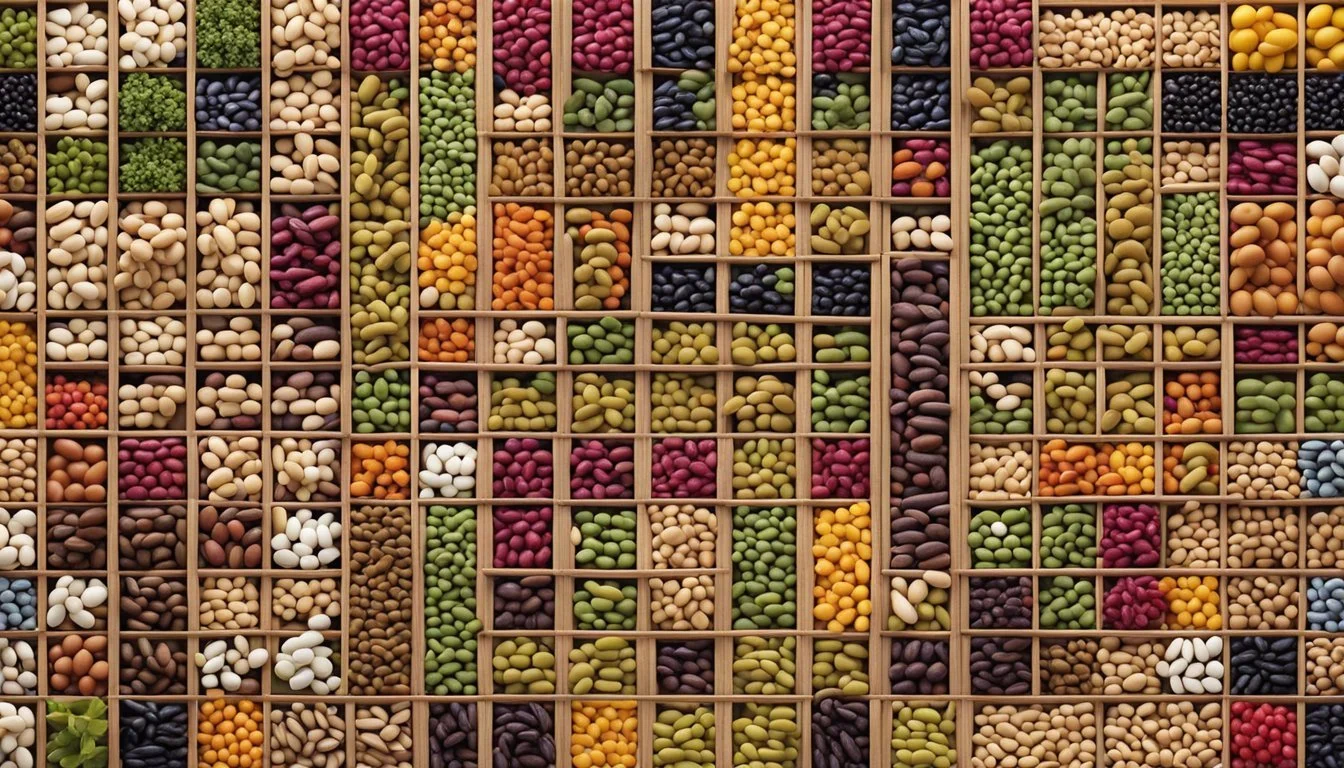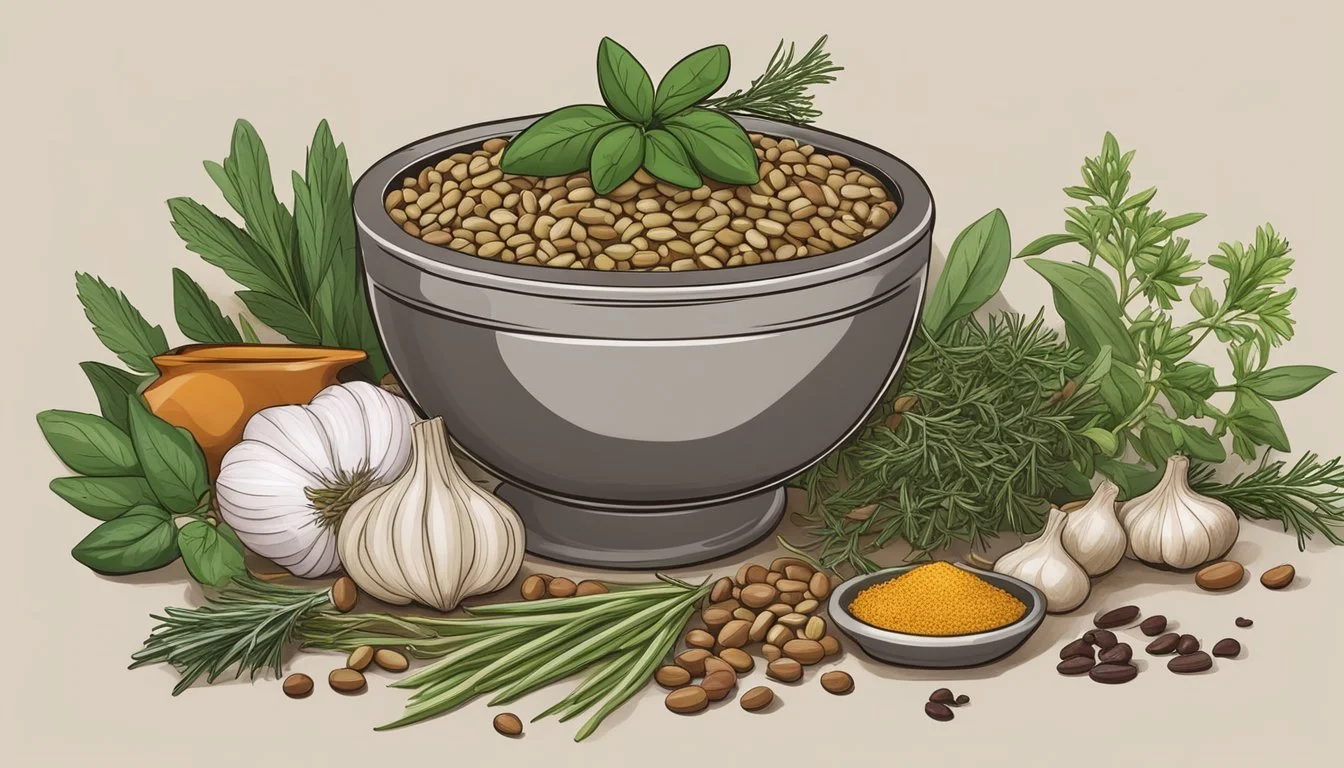Zolfini Beans Substitutes
Best Alternatives for Cooking
Zolfini beans, known for their small size and delicate yellow hue, are prized in Italian cuisine for their thin skins and creamy texture. Originating from the Pratomagno area of Tuscany, these beans are celebrated for their mild flavor that complements a variety of dishes. For those unable to find Zolfini beans, suitable substitutes include cannellini beans and Fagioli del Purgatorio.
Cannellini beans, with their creamy texture and slightly nutty flavor, are a versatile alternative. They are larger than Zolfini beans but share a similar softness and ability to absorb flavors. Additionally, Fagioli del Purgatorio, another traditional Italian bean, offers a comparable mild taste and tender skin that can enhance multiple recipes.
Experimenting with these substitutes can help maintain the authenticity and richness of Tuscan culinary creations. Whether using cannellini beans or Fagioli del Purgatorio, incorporating these substitutes allows home cooks to enjoy the distinctive qualities of Zolfini beans in their dishes.
Understanding Zolfini Beans
Zolfini beans, a specialty of Tuscany, are known for their delicate, creamy texture and mild flavor. The beans thrive in specific regions, bringing both culinary and nutritional benefits to those who enjoy them.
Origins and Cultivation in Tuscany
Zolfini beans originate from Tuscany, particularly around Pratomagno and Loro Ciuffenna. They are often found in terraced hillsides among olive groves near the ancient Cassia Vetus road. Their name, "Zolfini," reflects the pale-yellow color reminiscent of sulphur ("zolfo" in Italian).
These beans are particularly tied to tradition and have been part of the local agriculture for centuries. Recovered by Slow Food initiatives, they thrive in the specific microclimate of Tuscany, cultivated using methods passed down through generations.
Culinary Uses and Flavor Profile
Zolfini beans are prized in Italian cuisine for their thin skins and creamy texture. Despite the delicate skin, they hold their shape well when cooked. This makes them an excellent choice for soups, stews, and salads.
Cooked with sage, garlic, and extra virgin olive oil, they develop a mild, almost nutty flavor that pairs well with a variety of dishes. They are a key component in traditional Tuscan recipes and are often appreciated for their ability to absorb and complement the flavors around them.
Nutritional Benefits and Dietary Importance
Nutritionally, Zolfini beans are a powerhouse. They are rich in protein, fiber, and important minerals such as iron and magnesium. This makes them a valuable addition to any diet, particularly for vegetarians and those looking to increase their plant-based protein intake.
Zolfini beans are also naturally gluten-free, making them suitable for people with gluten sensitivities or those following a gluten-free diet. Their high digestibility, due to their thin skins, further enhances their dietary benefits, aligning well with the health-focused Mediterranean diet popular in Europe and beyond.
Choosing Zolfini Bean Substitutes
When selecting substitutes for Zolfini beans, it is essential to consider factors such as texture, taste, and the specific dish you're preparing. Different beans can perform uniquely in various recipes, making certain options more suitable for particular culinary uses.
Factors to Consider When Selecting Alternatives
Texture: Zolfini beans have a creamy texture. When choosing substitutes, consider beans like cannellini or butter beans which share similar creaminess. This ensures the dish retains the correct mouthfeel.
Taste: The mild, slightly sweet taste of Zolfini beans pairs well with many dishes. Alternatives like navy beans or white kidney beans also have a mild flavor, making them good substitutes without overwhelming the original dish's taste profile.
Compatibility: Think about the specific recipe. For soups and stews, beans that hold their shape well, such as chickpeas or pinto beans, might be ideal. For salads and dips, softer beans can blend well yet add the needed texture and flavor.
The Best Bean Alternatives for Different Dishes
Soups and Stews:
Navy Beans: Their soft texture and neutral taste make them perfect for hearty soups and stews.
Chickpeas: They hold their shape well and add a bit of nuttiness, suitable for more robust vegetable stews.
Salads and Casseroles:
Butter Beans: Known for their silky texture, they blend seamlessly into fresh salads and savory casseroles.
Cannellini Beans: With a creamy texture, they are excellent in both cold salads and baked dishes.
Curries and Dips:
Pinto Beans: Ideal for rich curries due to their earthy flavor and consistency.
Black-eyed Peas: They bring a slightly firm texture that works well in bean dips and light curries.
Considering these factors and alternatives ensures the dishes remain flavorful and texturally satisfying, even in vegan recipes.
Top Bean Varieties as Zolfini Alternatives
Choosing the right substitute for Zolfini beans can greatly impact the flavor, texture, and overall culinary experience. Various beans, such as Cannellini, Kidney, Navy, Chickpeas, Lima, Butter, and Great Northern, offer unique characteristics that make them suitable replacements.
Cannellini Beans: A Versatile Substitute
Cannellini beans, also known as white kidney beans, are an excellent substitute for Zolfini beans. They have a mild flavor and a creamy texture, making them suitable for a variety of dishes. Cannellini beans hold their shape well when cooked and can be used in soups, stews, and salads. They are rich in protein and fiber, providing nutritional benefits similar to Zolfini beans. When seasoned with salt and a drizzle of extra virgin olive oil, Cannellini beans can closely mimic the taste and feel of Zolfini beans.
Kidney Beans: Rich in Flavor and Texture
Kidney beans, particularly the red variety, are another viable alternative to Zolfini beans. Known for their rich, slightly nutty flavor and firm texture, kidney beans work well in hearty dishes such as chili, casseroles, and stews. They absorb flavors from spices and seasonings effectively while retaining their shape during cooking. Due to their robust nature, kidney beans make an ideal substitute in recipes that require a more substantial bean presence. A pinch of pepper can enhance their savory profile.
Navy Beans: Ideal for Creamy Dishes
Navy beans, small and oval-shaped, offer a mild, slightly sweet flavor that fits well as a Zolfini bean replacement. They are particularly excellent in creamy dishes and soups due to their ability to break down and thicken the broth. Navy beans are also a good source of protein, magnesium, and other essential nutrients, making them a healthy alternative. Including them in dishes that need a softer texture can replicate the delicate mouthfeel of Zolfini beans.
Chickpeas: A Robust Option for Hearty Meals
Chickpeas, or garbanzo beans, are a robust substitute for Zolfini beans especially in hearty meals. They have a slightly nutty taste and a firm texture that holds up well in stews, salads, and curries. Chickpeas are versatile and absorb flavors from spices and seasonings brilliantly. They can be cooked until tender and then seasoned with a mix of salt, olive oil, and pepper to achieve a satisfying robustness in savory dishes.
Lima and Butter Beans: Smooth and Buttery
Lima beans and butter beans, known for their smooth, buttery texture, are suitable alternatives to Zolfini beans in various creamy recipes. These beans provide a delicate flavor profile and a soft texture that fits well in soups, casseroles, and purees. Lima and butter beans are also nutrient-dense, offering protein, fiber, and vitamins. A touch of extra virgin olive oil can enhance their natural creaminess, making them an excellent stand-in for Zolfini beans in rich, buttery dishes.
Great Northern Beans: Delicate and Mild
Great Northern beans are an ideal substitute for Zolfini beans due to their delicate, mild flavor and versatile application in numerous recipes. They are larger than navy beans but share a similar texture and sweetness. Great Northern beans are suitable for soups, stews, and baked dishes, where a gentle presence is desired. Seasoning them with salt and a light drizzle of olive oil can complement their subtle flavor, making them a viable alternative when Zolfini beans are unavailable.
Non-Bean Alternatives for Distinct Flavors
For those seeking alternatives to Zolfini beans that offer unique flavors, there are several non-bean options that provide variety and nutritional benefits. These substitutes can enhance your dishes with distinct flavors and textures while accommodating various dietary preferences.
Quinoa and Seeds: Nutrient-Rich Substitutes
Quinoa and seeds like chia and flax can replace Zolfini beans in many dishes. Quinoa is a gluten-free grain packed with protein, fiber, and essential amino acids. It's an excellent base for salads, grain bowls, and even as a side dish.
Chia seeds and flax seeds add a nutty flavor and are rich in omega-3 fatty acids. They can be sprinkled on salads or blended into smoothies for added nutrition. These seeds also serve as a binding agent in vegan recipes.
Tofu and Nuts: Protein-Packed Options
Tofu is a versatile protein source suitable for vegans and those seeking a non-bean alternative. It can be used in soups, stir-fries, and even grilled as a main dish. Tofu absorbs flavors well, making it adaptable to various cuisines.
Nuts such as almonds, walnuts, and cashews provide a crunchy texture and are rich in healthy fats and protein. They can be chopped and added to salads, grain bowls, or used as a topping for roasted vegetables. Additionally, nut-based spreads or sauces can serve as creamy additions to dishes.
Vegetables and Grains: Versatile and Satisfying
Certain vegetables and grains can also replace Zolfini beans. Green peas are a great option, offering a sweet flavor and vibrant color. They work well in soups, salads, and as side dishes.
Cauliflower and sweet potatoes are versatile vegetables that can mimic the texture of beans in many recipes. They can be roasted, mashed, or added to stews for a hearty component.
Grains like barley and farro can substitute beans in stews and soups, providing a chewy texture and a nutty flavor. Both grains are nutritious and create a satisfying base for various dishes.
Each of these non-bean alternatives brings a distinct flavor and texture, ensuring your meals remain diverse and exciting.
Enhancing Flavors and Seasoning Combinations
The right combination of flavors and seasonings can elevate Zolfini beans, making them a standout ingredient in any dish. By carefully selecting herbs, spices, fats, and oils, and using salt and pepper effectively, the natural taste of these beans can be significantly enhanced.
The Role of Herbs and Spices
Sage and garlic cloves are highly effective in bringing out the best in Zolfini beans. Sage imparts a woody, slightly peppery flavor that complements the beans’ creamy texture. Garlic cloves, whether minced or roasted, add a savory depth and aromatic intensity.
Cumin and paprika can introduce warm, earthy notes. Cumin adds complexity with its distinctive taste, while paprika provides a subtle sweetness and vibrant color.
A combination of these herbs and spices, along with freshly ground black pepper, can create a balanced flavor profile that highlights the beans’ natural attributes.
Using Fats and Oils for Cooking and Dressing
Olive oil, particularly extra virgin olive oil, plays a crucial role in Zolfini bean dishes. Its rich, fruity flavor enhances the beans without overpowering them.
When cooking, a generous drizzle of olive oil can add a smooth, luxurious texture. For finishing, extra virgin olive oil brings a fresh, robust element that ties together all the flavors.
In addition to olive oil, adding a small amount of butter during cooking can also enhance the creaminess of the beans. This combination of fats ensures a well-rounded, satisfying flavor in each bite.
The Importance of Salt and Pepper
Sea salt and black pepper are fundamental to seasoning Zolfini beans effectively. Sea salt, with its distinct mineral taste, highlights the beans’ natural sweetness. It should be added during cooking to allow the beans to absorb the flavors fully.
Black pepper, freshly ground, introduces a sharp, pungent heat that balances the dish. It is best added towards the end of cooking or just before serving to preserve its aromatic qualities.
Together, sea salt and black pepper create a harmonious base that enhances all other seasonings, bringing out the best in Zolfini beans.






